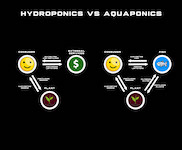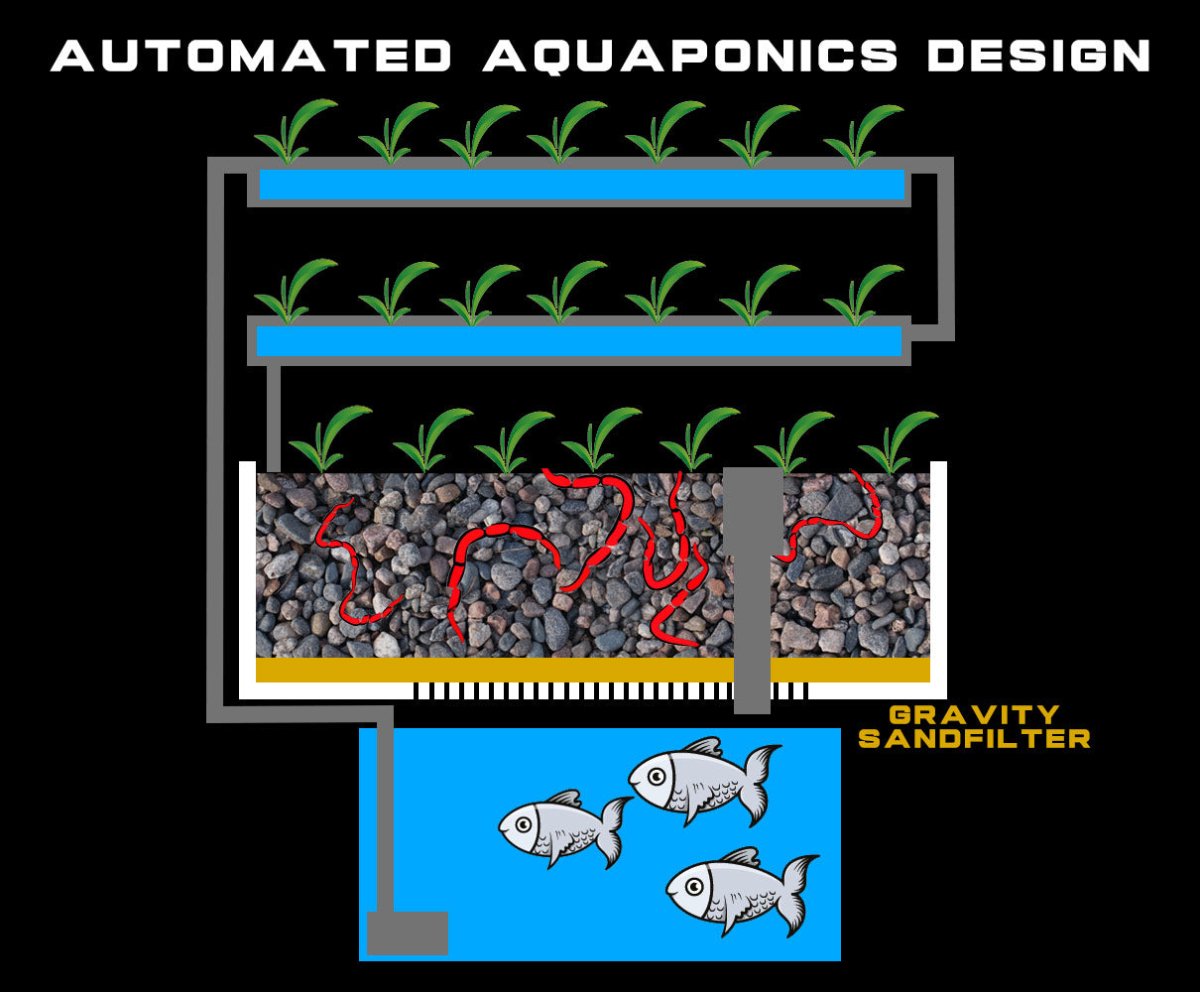
Automated aquaponics system provides the ability to do this from the comfort of your home. Wishing to cultivate your edibles? Follow this step-by-step guide to learn how you can easily implement your automated aquaponic system at home with only 13 ingredients:
- Tank: Anything that holds water, is food-safe, and is stable. Ideally, a reused IBC Tank, your aquarium, or even your pond. Almost any size can do it but the bigger the better.
- Grow Bed: Stable plastic container with a bigger area than your tank but doesn’t have to.
- Grow Medium: Expandable clay pebbles, sand, gravel, lava crushes, small stones, almost anything that works.
- Water Pump: Moves the water from the tank to the grow bed.
- Timer: Automating the filtering process through the grow bed.
- Air Pump: Aerate the water for the fish, plants, and microorganisms.
- Fish Feeder: Automate the feeding process. Even though I prefer to manually feed and watch my fish.
- Stock: Prawns or fish or both? These are the decisions you have to make from today on.
- Worms: Clean the fish feces of harmful diseases with their antimicrobial properties and turn them into a plant-available form.
- Plants: What herbs do you like to eat? Do you just want to live healthier? There are almost no limits to what can grow in aquaponics, only our imagination.
- PVC Pipes: Overflow to prevent overflooding.
- Optional: Heater depending on your stock wishes and location.
- Optional: Lighting for winter months and indoor gardening without sunlight. LEDs are very cheap nowadays.
Choosing the Right Location for Your Aquaponics System
Selecting the ideal spot for your aquatic buddies is very important. Make sure to pick a fitting place for your fish to thrive and do well. Whether you decide on an indoor, outdoor, or greenhouse setup, several factors need to be considered to ensure the health of both the fish and the plants:
- Sunlight: Fish don’t necessarily need direct sunlight even though it helps create vitamin D, but the plants in your aquaponics system do. A location with ample sunlight will aid in the growth of the plants, which in turn will benefit the fish. Greenhouses can be an excellent choice to harness natural light while protecting the system from adverse weather conditions.
- Temperature: Fish are ectothermic animals, meaning their body temperature is regulated by the surrounding environment. Therefore, it's essential to consider the temperature of the location. Indoor setups allow for better control of temperature, while outdoor locations might expose the fish to seasonal temperature fluctuations.
- Seasonality: Depending on the type of fish, some might thrive better in certain seasons than others. When setting up outdoors, it is vital to account for seasonal changes and how they will affect the fish and the overall aquaponics system.
- Space: Aquaponics systems can be adapted to various spaces, from compact indoor setups to expansive outdoor ones. Consider the available space and whether vertical farming could be a solution to optimize the area, especially in urban environments with limited room.
- Humidity: Humidity levels can impact plants. While most plants thrive in higher humidity, some plants might not. Indoor and greenhouse setups allow for better control of humidity levels, ensuring a balanced environment for both components of the system. Low humidity can become a big problem when trying to grow indoors in the winter time.
- Wind: Wind can cool the water in the fish tank, potentially leading to temperature fluctuations that might be harmful to the fish, especially in outdoor setups. A sheltered location or a greenhouse can help mitigate the effects of wind.
- Structural Stability: Water is heavy so make sure the building can handle the weight of your aquaponics system.
Constructing an aquaponics system that's both attractive and practical is like finding a soulmate who can also cook - tough but highly rewarding!
Designing the Perfect Aquaponics System
Designing the Perfect Aquaponics System Configuration
Maximize productivity and efficiency with the right layout. Utilize height, space, and gravity. Automate systems for easy maintenance and harvest. Employ gravity for water flow and filtration. Drill holes into the bottom of your grow bed and put a mesh over it that can hold sand in place. The water and fish dirt pumped into the grow bed will get stuck in the sand filter. Only clean sand-filtered water is slowly dripped into the fish tank. The dirt that stays stuck in the grow bed will be consumed by bacteria and the worms that inhibit the grow bed.
Additional details to consider when designing:
- Lighting, temperature control, humidifier, fish-tank ratios, and nutrient management.
- Choose suitable plants and fish that thrive together.
- Optimize water circulation to enhance oxygenation by including aerators.
Unlock endless possibilities with your automated aquaponics system. Enjoy sustainable food production while reducing your carbon footprint. Cultivate fresh produce at home with minimal effort! Fish tanks are like underwater apartments - just without the noisy neighbor's and lack of privacy.
Fish Tank: The Fundament of Aquaponics Systems
A fish tank is a key part of setting up an automated aquaponics system. It's the home for the fish and gives them a place to thrive. I remember the first time I set up my aquaponics system; I was unsure about the tank size. After trying different options, I found that IBC containers provided the best balance between capacity and manageability.
Here are important things to think about when choosing or repurposing a container to be a fish tank:
|
Container Size |
Advantages |
Disadvantages |
|
IBC Containers |
- Large capacity - Easy to find and purchase - Durable construction - Quiet cheap second hand |
- Might need more space - Hard to transport - Not transparent |
|
Repurposed Aquariums |
- Available - Made for aquatic life - Easy to keep water quality good - Seethrough |
- Limited sizes - Not great for large fish |
|
Converted Ponds |
- Roomy, with lots of swim area - Natural filtration from ecosystem - Can turn an existing feature into aquaponics setup |
- Expensive & time-consuming to set up - Must plan carefully |
You can also use other containers like plastic barrels or bathtubs. Recycling these materials helps reduce waste and you can adapt to different spaces.
Click here for an in depth analysis of an Aquaponics Fish Tank.
Did you know?
Transform your grow bed into a super bio filter and watch it become an aquatic serial killer!
Grow Bed: The Bio Filter System for Aquaponics
The Bio Filter: Maximizing Surface Area for Bacterial Growth!
A bio filter is a must-have for an automated aquaponics system. It serves as a habitat for beneficial bacteria and worms, which are key for the aquaponic ecosystem. Check out the table below for the features and considerations when setting up your own bio filter.
|
Feature |
Consideration |
|
Grow Medium |
Choose sand, clay gravel, or other options depending on the system needs. |
|
Weight |
Consider the grow medium weight for structural stability. |
|
Surface Area for Bacteria |
The surface area determines bacterial growth. More area equals more bacteria and more efficient nutrient cycling. |
|
Filter Power |
Design and height affect filtration capacity. Optimal design ensures solid waste removal from the water. |
|
Beneficial Microorganisms |
Bacteria are not the only ones living in the bio filter. Fungi and worms can also inhabit it, increasing its filtering and nutrient conversion. |
|
Height |
Unlike growing with soil, aquaponics allows for very compact grow beds because the nutrients are transported in the water. I have achieved amazing results with 3 inch high beds. |
When creating your automated aquaponics system, keep these aspects of the bio filter in mind to ensure optimal performance and sustainability. Research shows effective bio filters can improve water quality, support healthy plant growth, and keep fish healthy. Make it happen: bring the future to your backyard!
Grow Medium for Aquaponics System
|
Grow Medium |
Weight |
Surface Area for Bacteria |
Filter Power |
|
Clay Pebbles |
Light |
High |
Medium |
|
Gravel |
Heavy |
Moderate |
Moderate |
|
Sand |
Heavy |
High |
High |
|
Small Stones |
Heavy |
Low |
Low |
|
Lava Crushes |
Moderate |
High |
High |
- Clay Pebbles: Lightweight and porous, providing high surface area for bacterial growth. Medium filtering capacity due to spaces between pebbles. This is the grow medium I would recommend you to use in combination with sand on the bottom of the grow bed. The light weight is very important as some buildings and structures, as well as your fish tank and grow bed may break over time when you overload them with heavy material.
- Gravel: Heavy with moderate surface area for bacteria. Moderate filtering power due to varied particle sizes.
- Sand: Heavy and offers high surface area but may compact, reducing plant rooting and worm living space. Probably the best results for plant growth out of all grow mediums are archived with sand that is not too fine.
- Small Stones: Heavier with lower surface area for bacterial colonization, but quite effective in mechanical filtration.
- Lava Crushes: Moderately weighted with high porosity and surface area for bacteria. Excellent filtering capability due to irregular shapes and sizes.
Utilizing Technology for Automated Aquaponics System
Technology has revolutionized aquaponics. Simplicity is key so I only use mechanical timers in this guide to automate our aquaponics systems.
We use automated systems to control pumps for flooding the grow bed, lighting, fish feeding and water temperature. The air pumps run 24/7. Renewable energy sources, like wind and solar power are cyclic so we can save overproduced energy in plant growth by running either grow lights or heaters. Depending on your needs tools like Arduino can monitor, automate, and remote control your system, but are completely optional.
Automation makes a balanced ecosystem for plants and fish all the time. Here's a table of common technologies used in automated aquaponics:
|
Technology |
Function |
Benefits |
|
Pump |
Circulates water between tank and grow beds |
Nutrients for plants, oxygenates water for fish |
|
Timer |
Controls component functioning hours |
Consistent lighting, grow bed flooding, regulates system operations |
|
Arduino |
Monitors & controls, eg. temp, pH, water levels |
Adjustments for optimal growth & fish health, synchronize with solar and wind energy generation |
|
Lighting |
Artificial light when natural sunlight is limited |
Photosynthesis for plants throughout the day, Algae growing for extra filtering and food |
|
Fish Feeder |
Automatically dispenses food at regular intervals |
Nutrition without manual feeding |
|
Heater |
Maintains optimal water temp. for fish survival |
Prevents harmful fluctuations in aquatic life |
Timer Durations for automated aquaponics sytems
Flood Pump for Grow Bed
- Frequency: Every 3 hours
- Duration: Run 15 minutes
Lighting
- Frequency: 12 hours on - 12 hours off
- Adapt it to your amount of sunlight
Fish Feeder
- Frequency: Adaptive
- Start slowly and adjust as needed
Though automation helps, continuous monitoring and maintenance are still required. Today, technology enables us to create and maintain automated systems at home - fostering a self-sustaining ecosystem that benefits both plants and fish.
Understanding the Nutrients in Aquaponics
Aquaponics Nutrition - nutrients are key!
I once faced a challenge with nutrient imbalances in my system. Stunted plant growth and yellow leafs were the result. After extensive research and experimentation, I found the solution. My fish were herbivores therefore there was a lack of nitrogen. Adding carnivores to my fish tank solved this problem.
Nutrients are vital for keeping aquaponics systems healthy and thriving. The table below outlines their role in plant growth:
|
Nutrient |
Role |
|
Nitrogen |
Leaf growth |
|
Phosphorus |
Photosynthesis |
|
Potassium |
Enhances flowering/fruiting |
|
Calcium |
Cell wall formation |
|
Iron |
Chlorophyll synthesis |
By understanding the relationship between input and output and the role of different fish in nutrient creation, you can tailor your aquaponic system to suit the plants you wish to grow.
1. Input = Output
In aquaponics, what you put into the system directly affects what you get out. The quality of fish feed, water, and added nutrients will influence the health of both your fish and plants.
2. Carnivore = Leaf Growth
Carnivorous fish primarily contribute to leaf growth in plants. This is because their waste is rich in nitrogen, a crucial element for the development of foliage in plants. If you're looking to cultivate herbs or leafy greens, carnivorous fish would be an ideal choice.
3. Herbivore = Fruits and Vegetables
Herbivorous fish, on the other hand, excrete waste that is more balanced and suited for growing fruits and vegetables. Their waste contains a mix of macronutrients that are essential for the flowering and fruiting stages of plant growth.
4. Macronutrients
Plants require several macronutrients for growth. These include nitrogen (N), phosphorus (P), and potassium (K), which are the primary nutrients. Those are required in large amounts compared to the trace amounts of micronutrients needed.
Check out our deep dive guide into aquaponics fertilizer and nutrients here.
5. Micronutrients
Micronutrients are elements required by plants in smaller quantities but are equally essential. These include iron (Fe), manganese (Mn), zinc (Zn), calcium (Ca), magnesium (Mg), and sulfur (S), copper (Cu), boron (B), molybdenum (Mo), chlorine (Cl) and a few more . A deficiency in any of these can lead to stunted growth and other health issues in plants.
6. Synthetic vs. Organic Fertilizer
While synthetic fertilizers can be used to supplement nutrients in an aquaponic system, they often contain chemicals that can harm aquatic life. Organic fertilizers, derived from natural sources, are a safer alternative as they release nutrients slowly and are less likely to cause harm if you really need to add fertilizer.
7. Rock Dust = Micronutrients
Rock dust is a valuable addition to an aquaponic system. It is a natural mineral product that is rich in micronutrients. By adding rock dust to your system, you can ensure that your plants receive all the essential elements they need for optimal growth.
Having the right balance is essential for successful plant production. Synthetic fertilizers may provide macronutrients, but organic sources like fish waste, compost, and rock dust naturally contain micronutrients and enhance sustainability.
There’s a unique satisfaction I feel every time I see the thriving ecosystem in my living room, reminding me of the initial days of uncertainty and learning.Aquaponics provides an eco-friendly method of cultivating food. Fish get a delicious meal and plants get their nutrients - it's a win-win!

Stocking Your Aquaponics System
A Tailored Approach to Aquaponics System
Building an aquaponics system is like crafting a symphony – every component, from the fish to the plants, plays a crucial note in the harmony of growth.
1. What Do You Like?
Aquaponics offers a canvas for diversity. Whether you have a penchant for strawberries, a fascination with shrimp, or a liking for Italian herbs, your system can be tailored to suit your preferences. The joy of aquaponics is that it's adaptable, and you can change your mind over time, experimenting with different plants and aquatic life.
2. Compatibility Considerations
While aquaponics allows for a variety of life, it’s crucial to note that not all fish are compatible with each other. For instance, catfish are known to have spikes and are best kept by themselves. Researching the compatibility of fish species will prevent unnecessary conflicts and ensure a harmonious environment.
3. Herbivore vs. Carnivore in your aquaponics system
Your choice between herbivorous and carnivorous fish will influence the type of plants you can cultivate most successfully. Herbivores are excellent for growing fruits and vegetables, while carnivores contribute more to leaf growth.
4. Consider Prawns and Shrimp
If fish don’t tickle your fancy, prawns and shrimp are excellent alternatives. They add variety to your system and are a delightful choice for those keen on crustaceans.
5. Reproduction without Restocking
Some fish species, like tilapia, are capable of reproducing in the system, allowing for a self-sustaining population. This means less effort in restocking, making them a popular choice among aquaponics enthusiasts.
6. Aesthetic Choices: Goldfish and Flower Horn
If your focus is more on aesthetics than production, consider stocking your system with vibrant goldfish or the uniquely beautiful flower horn fish. They add a visual appeal to your setup, making it a living piece of art.
7. Adaptability and Change
One of the hallmarks of aquaponics is its adaptability. Feel free to experiment, switch things up, and find what works best for you. Whether you’re in it for the produce, the aquatic life, or both, there’s always room for change and optimization.
Here is a list of carnivorous, herbivorous, and omnivorous fish, as well as some types of shrimp, that are commonly used in aquaponics:
List Fish and Shrimps for an Aquaponics System
Carnivorous Fish
- Catfish - Known for their adaptability and being a great source of protein. Nutty taste and small bones.
- Trout - Thrive in cooler water temperatures and are highly sought after for their taste.
- Barramundi - Prefer warmer waters and are valued for their delicious flavor.
- Yellow Perch - A popular choice for aquaponics due to their taste and adaptability.
Herbivorous Fish
- Tilapia - Renowned for their hardiness, adaptability, and ability to thrive in various water conditions.
- Silver Carp - Efficient at algae consumption and can help in maintaining water quality.
- Grass Carp - Excellent at consuming aquatic plants and can be helpful in controlling weed growth.
- Koi - Primarily kept for ornamental purposes but can also contribute to nutrient cycles.
Omnivorous Fish (Both Herbivore and Carnivore)
- Goldfish - Popular for their ornamental value and adaptability.
- Bluegill - A versatile choice, known for their hardiness and ability to thrive in various environments.
Shrimps
- Pacific White Shrimp (Litopenaeus vannamei) - One of the most commonly cultured shrimp species, known for its adaptability and growth rate.
- Giant River Prawn (Macrobrachium rosenbergii) - Valued for its size and flavor, suitable for freshwater aquaponics.
- Cherry Shrimp (Neocaridina davidi) - Small, colorful, and ideal for smaller aquaponics systems.
Start building your own aquaponics system today to grow organic produce in your living room. Delicious home-cooked meals are just a few steps away!
Plants You can Cultivate in Aquaponics Systems
One lesson I’ve learned through trial and error is the importance of balancing the system. It’s a delicate dance ensuring the fish are happy and the plants are nourished. Aquaponics is a great way to grow plants and there are almost no limits to what can be grown. Here's a list of the types that do well:
Leafy Greens
- Lettuce
- Thrives in aquaponics systems and has various varieties to choose from.
- Kale
- Known for its nutritional value and versatility in dishes.
- Swiss Chard
- Colorful and nutritious, a great addition to salads and cooked dishes.
- Spinach
- Fast-growing and rich in vitamins and minerals.
- Arugula
- Adds a peppery flavor to salads and is quick to mature.
- Bok Choy
- A type of Chinese cabbage that's easy to grow and versatile in recipes.
Herbs
- Basil
- A popular herb with a distinct aroma, used in various cuisines.
- Mint
- Known for its refreshing flavor and aroma, great for teas and garnishes.
- Cilantro (Coriander)
- Widely used in culinary dishes for its unique flavor and aroma.
- Parsley
- A versatile herb, used for flavoring and as a garnish.
- Chives
- Adds a mild onion flavor to dishes and is easy to grow.
- Dill
- Known for its feathery leaves and distinct taste, used in pickles and salads.
Vegetables for an Aquaponics System
- Tomatoes
- A versatile fruiting vegetable, used in salads, sauces, and many dishes.
- Bell Peppers
- Comes in various colors and is a crunchy, sweet addition to recipes.
- Cucumbers
- Refreshing and crunchy, great for salads and pickling.
- Radishes
- Quick to mature and adds a peppery crunch to dishes.
- Zucchini (Courgette)
- A summer squash that's versatile in cooking.
Fruits
- Strawberries
- Sweet and aromatic, a popular choice for fresh eating and desserts.
- Melons
- Requires more space but can be rewarding with sweet, juicy fruits.
- Blueberries
- Requires acidic soil pH but can produce delicious and nutritious berries.
Cannabis
- Aquaponics Suitability: Aquaponics can be a suitable method for growing cannabis, as it provides a constant supply of nutrients and water.
- Considerations: Be aware of the legal regulations surrounding cannabis cultivation in your area.
The water in an aquaponic system provides essential nutrients and oxygen to the plants, while the plants naturally filter and purify the water for the fish. To avoid root rot, use a growing medium such as gravel or clay pellets that give the roots support without suffocating them.
For optimal growth, consider the following:
- Choose the right plants for your climate and preferences.
- Monitor water conditions and keep pH and nutrient levels balanced.
- Ensure there is enough light for the plants.
- Give each plant enough space to grow by spacing them adequately.
By following these tips, you'll have a thriving aquaponic system with homegrown organic fresh produce.
Sustainable Fish Feed Options for your Aquaponics System
Fish-Fooding Your Aquaponics System? Sustainable Options!
For feeding your aquaponics fish, there are sustainable alternatives. These promote environment-friendly practices and provide vital nutrients.
Check out this comprehensive overview of the options:
|
Feed Option |
Description |
|
Commercial Feed |
Nutritionally balanced feed available on the market |
|
Leftovers |
Utilize kitchen scraps as a cost-effective option |
|
Black Soldier Fly Larvae |
Nutrient-rich larvae that are fast decomposer |
|
Worms |
Natural sources of protein & fats |
|
Algae |
A great source of protein & essential fatty acids |
|
Amphipods |
Offer a natural feeding experience for omnivorous fish |
1. Commercial Feed
- Description: Commercial feed is specially formulated to provide the necessary nutrients for a specific fish for growth and health.
- Sustainability: Look for brands that use sustainable ingredients and practices, such as responsibly sourced fish meal and plant-based alternatives.
- Considerations: While convenient, all commercial feeds must contain non-sustainable ingredients and additives like preservatives to protect the perishable fish fat. Reading labels and researching brands can help you make informed choices.
2. Leftovers
- Description: Kitchen scraps and leftovers can be a free source of healthy nutrients for fish.
- Sustainability: Utilizing leftovers reduces waste and is a cost-effective feeding option.
- Considerations: Ensure that the food is safe for fish consumption and does not contain harmful additives, spices, or salt. Don’t feed meat and dairy products.
3. Black Soldier Fly Larvae
- Description: Black soldier fly larvae are a protein-rich feed option for fish.
- Sustainability: They can be easily cultivated on organic waste, converting it into high-quality protein. The Larvae are fast growers and very efficient. Compared to composting they mitigate 47 times lower CO2 while also producing protein and fat.
- Considerations: Properly processing and storing the larvae are essential to maintain their nutritional value.
4. Worms
- Description: Earthworms and red wigglers are excellent sources of protein and nutrients for fish.
- Sustainability: Worms can be cultivated in vermicomposting systems using kitchen scraps and organic waste.
- Considerations: Notice that earthworms grow very slow and don't multiply fast.
5. Algae
- Description: Algae are a natural and nutritious food source for many fish species.
- Sustainability: Algae can be cultivated in the fish tank as sunlight hits the water. They clean the water and also produce healthy food.
- Considerations: Balancing algae growth to prevent overproduction and maintaining water quality are important.
6. Amphipods
- Description: Amphipods are small crustaceans that serve as a natural and nutritious food source for fish. They feed on the algae that the fish don’t eat and make it available for the fish.
- Sustainability: They can be cultured in the aquaponics systems as an addition, contributing to the biodiversity and health of the ecosystem.
- Considerations: Managing amphipod populations and ensuring they are safe for fish consumption are key.
Incorporating these unique feeds in your system ensures a diverse diet and is sustainable. This promotes optimal growth & health, without relying on commercial products.
Did you know Black Soldier Fly Larvae reduces the need for wild-caught fishmeal?
Turn your organic waste into a fish feast. Nothing says 'dinner and a show' like watching your pet fish munch your kitchen scraps.

Making Use of Organic Waste in an Aquaponics System
Make use of organic waste in an innovative way! Utilize leftovers, set up a worm composting system and harness the power of black soldier fly larvae. Transform your kitchen scraps into a valuable resource that minimizes environmental impact while nourishing fish and plants.
1. Feeding Leftovers
- Description: Utilize kitchen scraps and leftovers as a source of food for fish and worms.
- Application: Ensure the leftovers are safe, unseasoned, and suitable for fish consumption. Gradually introduce them to the fish’s diet and monitor their response.
2. Worm Composting
- Description: Vermicomposting is the process of using worms to decompose organic food waste, turning the waste into a nutrient-rich material capable of supplying necessary nutrients to plants.
- Application: Set up a worm bin and introduce red wigglers or earthworms. Feed them with kitchen scraps and organic waste, and use the resulting compost as a nutrient-rich medium for plants.
3. Black Soldier Fly Larvae
- Description: Black Soldier Fly Larvae (BSFL) are excellent at decomposing organic waste and converting it into protein-rich biomass suitable for fish feed.
- Application: Set up a BSFL bin and introduce larvae. Feed them with organic waste and harvest the mature larvae to feed your fish.
4. Fish Waste
- Description: Fish waste is rich in nutrients and can be used to fertilize plants.
- Application: In an aquaponics system, fish waste is naturally converted into nutrients for plants by beneficial bacteria. Ensure proper water circulation and filtration to maintain water quality and nutrient availability.
By creatively using organic waste such as feeding leftovers to fish, worm composting, cultivating black soldier fly larvae, and utilizing fish waste, you can significantly enhance the sustainability and productivity of your aquaponics system. These methods not only contribute to waste reduction but also create a closed-loop system, mimicking natural ecosystems and promoting biodiversity and resilience.
Supporting the Natural Water Cycle
Sustaining the natural Water Cycle is crucial for running a successful automated aquaponics system. Rainwater collection and grey water recycling can help manage water usage and reduce wastage. Monitoring pH, nitrate, nitrite, ammonia, and ammonium levels will ensure optimal conditions for both aquatic animals and plants. This sustainable approach supports the natural Water Cycle and maintains your system's health.
Rainwater collection is an effective way to contribute to the natural Water Cycle in your aquaponics set-up. It reduces reliance on traditional water supplies and conserves resources. Greywater recycling is another way to support the Water Cycle. Instead of throwing away vegetable washing or other non-contaminated household water, it can be redirected to your aquaponics system. This not only reduces water consumption but also makes use of nutrient-rich water.
Monitoring and controlling water chemistry is also important for sustaining the natural Water Cycle. Testing pH levels creates a stable environment for aquatic organisms. Checking nitrate, nitrite, ammonia, and ammonium concentrations allows you to make adjustments as needed. This only has to be done in the beginning as the system matures it autoregulates very well.
By implementing sustainable practices such as rainwater collection and grey water recycling, and regulating essential chemical factors, you can support the natural Water Cycle in your local area. These approaches save resources and lead to healthier ecosystems capable of sustained growth and productivity. Who needs a green thumb when you can have fish do all the gardening for you?
Sustainability of Home Aquaponics System
Home Aquaponics's Long-Term Viability
Aquaponics is an awesome, circular system. It combines aquaculture and hydroponics. This allows us to cultivate plants and fish in a self-sustaining environment. Let's explore how it can help us to sustain biodiversity, conserve resources, and ensure food security.
The Sustainability of Home Aquaponics (Table):
|
Benefits |
Evidence |
|
Fighting Overfishing |
Reduces reliance on wild fish populations as an alternative protein source. |
|
Conserving Water |
Uses way less water than traditional soil-based agriculture. |
|
Reducing Deforestation |
No need for expansive agricultural land, curbing deforestation. |
|
Sustainable Food Production |
No single-use plastics or transportation needed; chemical-free farming. |
|
Make Use Of Waste |
Refeed leftovers directly to fish or indirectly with black soldier fly larvae and worm farming. |
|
Support Local Rain Cycle |
Collect rainwater and enhance humidity levels with all the plants you grow |
|
Biodiversity |
Insects and birds will enjoy your aquaponics system as much as you and your fish do. |
Home aquaponics systems can collect rainwater. This helps reduce reliance on external water sources. Feeding the fish carefully and managing waste well ensures sustainability with minimal environmental impact.
Aquaponics does all the work for you, so you can just relax and think about how sustainable your future is!
Lazy Sustainability Way
The 'Effortless Eco-Friendly Approach' is a hot trend amongst eco-conscious individuals. It enables individuals to create an automated aquaponics system at home, without needing to be monitored or maintained regularly.
Biodiversity and vertical farming techniques are used, to maximize space and reduce manual intervention. Aquaculture and hydroponics combine; fish waste provides nutrients for plants, and plants purify the water for the fish.
Low-maintenance fish feeder and algae replace daily feeding, reducing labor requirements. Not only does this approach benefit the environment, but it also provides individuals with sustainable fish protein and fresh produce all year round.
Who needs store bought produce when you can have your own aquaponics system that eats your waste, guarantees freshness, and see a side of the fish you’ve never seen?
Comparing Aquaponics and Store Bought Produce
Aquaponics vs Locally Grown Produce
Comparing the two, there are several factors to consider, including:
- Price: Aquaponic setup costs more initially, but long-term savings are significant due to low water and energy use.
- Profitability: Aquaponics offer better potential for profitability as crops can be grown all year round.
- Plastic Usage: Aquaponics require no plastic compared to store-bought produce.
- Transport Distance: With aquaponics at home, there is no need for transport.
- Taste, Fragrance, Freshness: Aquaponics produce has a superior taste and fragrance.
- Availability: Aquaponics provide a consistent supply of your favorite fresh produce.
Jane discovered the difference in quality between aquaponics and store-bought produce. Now, she harvests her own vibrant red fruits for her dishes. Aquaponics can turn your backyard into a paradise with an automated system.
Time for Harvest
It's Time to Enjoy the Rewards of Your Efforts!
Organize your aquaponics system smartly for an abundant harvest. Consider factors like water temperature, fish development speed, and plant ripening period. With careful preparation, you can maximize your crops throughout the year.
The Time for Harvest table below shows the estimated time needed for a variety of plants to mature in an automated aquaponics system:
|
Plant |
Time to Reach Maturity |
|
Lettuce |
4-6 weeks |
|
Tomatoes |
8-14 weeks |
|
Cucumbers |
6-8 weeks |
|
Bell Peppers |
10-12 weeks |
|
Strawberries |
4-6 months |
The best thing about home aquaponics is if you don’t want to harvest immediately you can just wait and the food keeps growing instead of going bad.
By learning the expected ripening times of different vegetables, you can plan and arrange your harvesting cycles accordingly. This adaptability enables you to enjoy a steady supply of fresh produce from your automated aquaponics system.
One more factor to think about is the quantity of produce you need and how long it takes for each plant variety to reach maturity. This will help you plan ahead and guarantee a regular supply of fresh food from your home-based automated aquaponics setup.
Don't miss out on the delight of growing your own food effortlessly with an automated aquaponics system. Begin setting up today and embrace a sustainable lifestyle that provides freshness at your fingertips!









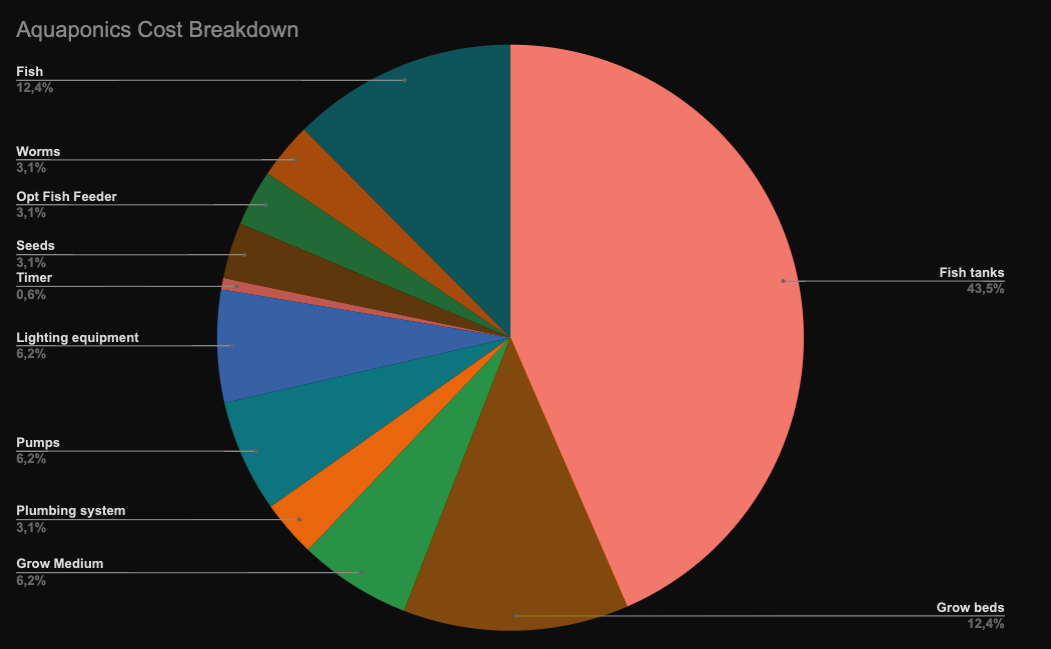
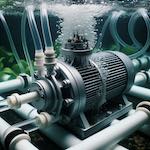
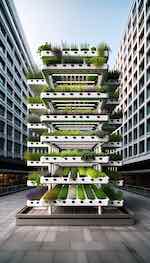
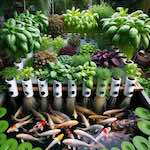
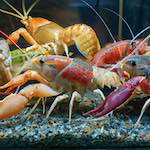
.jpeg)
